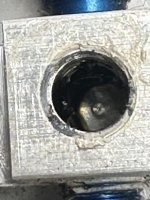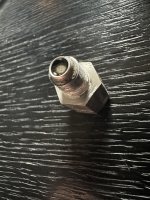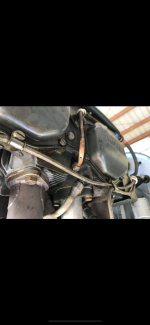For those of you who have an Omega PS-8G snubber installed in your MAP line, don't forget to clean it out every so often (e.g. at each oil change, Condition Inspection/Annual Inspection).
I encountered "odd" behavior of the MAP reading in my Garmin G3X Touch over the past few flights and while on the ground with the engine off. Readings were physically impossible unless I was in the eye of a hurricane or in a 1000ft deep hole in Death Valley.
Upon removing and inspecting the MAP transducer, I noticed that the MAP port in Van's manifold (VA-168) was loaded with engine oil, and the snubber was also clogged with engine oil. I removed the hose from the #3 cylinder primer port and flushed it with air. Cleaned out the manifold with brake cleaner, and replaced the snubber with a .008" orifice fitting instead of the Omega snubber.
Since I am not in the mood to move the pressure tap to the intake plenum/sump, I will add inspection/cleaning of the MAP line/snubber to my CI checklist.
Cheers,
Brian
I encountered "odd" behavior of the MAP reading in my Garmin G3X Touch over the past few flights and while on the ground with the engine off. Readings were physically impossible unless I was in the eye of a hurricane or in a 1000ft deep hole in Death Valley.
Upon removing and inspecting the MAP transducer, I noticed that the MAP port in Van's manifold (VA-168) was loaded with engine oil, and the snubber was also clogged with engine oil. I removed the hose from the #3 cylinder primer port and flushed it with air. Cleaned out the manifold with brake cleaner, and replaced the snubber with a .008" orifice fitting instead of the Omega snubber.
Since I am not in the mood to move the pressure tap to the intake plenum/sump, I will add inspection/cleaning of the MAP line/snubber to my CI checklist.
Cheers,
Brian







